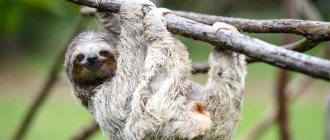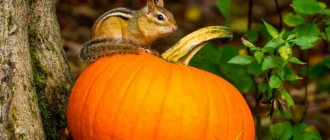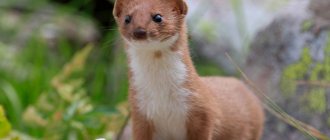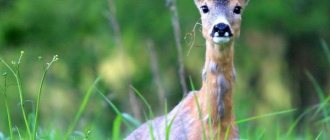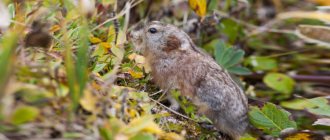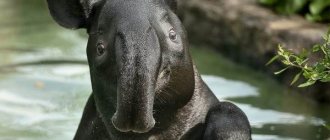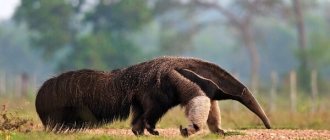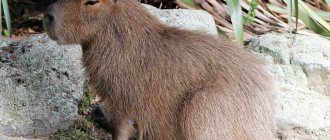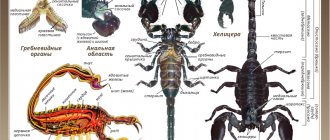- Where does the sloth live?
The sloth, which lives in South America, got its name for a reason, because it is truly one of the slowest representatives of the animal world (although it can compete with it in this title
turtles and other snails), and yet the slowest among mammals. Sloths are perfectly depicted in the beautiful children's cartoon Zootopia, where the natural slowness of these creatures was wittily compared to the slowness of some government officials.
Well, cartoon is cartoon, and in our article today we will describe real sloths living in natural conditions.
Description, structure, characteristics
The appearance of the sloth is the most amazing and unique; it is unlike any other representative of the animal world. Even their closest relatives from the order of edentates -
anteaters (by the way, also with an amazing appearance) and armadillos are completely different from them.
A characteristic feature of the sloth is the presence of special fingers in the form of hooks. The sloth usually has three toes, but there are species that have only two. These fingers are not just for the sake of beauty, they are actually very strong and tenacious, with their help sloths can easily hang on tree branches, where they spend most of their lives.
The size of sloths is not large: the body length of this animal is usually 50-60 cm, weight 4-6 kg. The sloth's body is covered with fur, which is brownish-gray in color.
The sloth's head is small and also covered with fur, sometimes so much that only the animal's eyes are visible. In general, the sloth's face somehow resembles either Chewbacca from Star Wars, or just an unusual shaggy
monkey. Interesting fact: the teeth of a sloth are devoid of enamel, however, they are all the same as a selection.
Do sloths have a tail? Yes, there is, but it is very small, so it is practically invisible under their thick fur.
Nature has given these animals an excellent sense of smell, but other sense organs have not worked out very well: vision and hearing in sloths are poorly developed. Their brains are also small, the small size of which probably plays a role in their slowness, but on the other hand, these animals are always calm, good-natured, and phlegmatic.
The internal structure of the sloth's body is not the same as that of other mammals, for example, the liver is located closer to the back, the spleen is on the right, their stomach and intestines are disproportionately larger, and this is not without reason. The fact is that sloths are very clean animals, and in order to relieve themselves, they descend from the trees to the ground, where they become defenseless against predators who are not averse to feasting on them. To minimize this risk, sloths relieve themselves less frequently, on average once a week, and are able to do so due to their larger stomachs.
The movement of a sloth on the ground looks very comical, and all because of the long fingers with large hooks, it seems that sloths are trying with great effort to overcome even the smallest obstacle. The speed of movement of a sloth on the ground is only a few meters per minute!
But oddly enough, sloths are excellent swimmers; they swim many times faster than they can move on land.
It is also interesting that sloths have one of the lowest body temperatures among mammals, averaging from 30 to 33 degrees, and sometimes dropping to 24 degrees. Such a low temperature is due to the fact that the metabolism of sloths is extremely slow.
Sloths also live up to their name not only by their slowness, but also by their love for a good sleep. Yes, they are big sleepyheads, how long does a sloth sleep per day? They usually sleep from 10 to 15 hours a day, which is also rare in the animal kingdom. Moreover, it is interesting that sloths sometimes sleep simply hanging upside down on tree branches.
Like this sleeping sloth.
Digestive system
Sloths live only in warm environments, as they cannot independently maintain their body temperature. Their lifespan is up to thirty years, and they are ready to reproduce already two years after birth. Analyzing what sloths eat and how they conserve their energy, you are not surprised that with a sedentary lifestyle they live quite well. This is how their stomach works, which has a complex anatomy. It has two departments. Each consists of several chambers. Thus, the digestive system extracts maximum benefits from nutrients for its owners. Considering the low calories from the leaves, this system works at the highest level. It is also interesting that sloths can tolerate hunger quite well. This quality is extremely rare in individuals that eat plant foods.
Nutrition
Sloths are good-natured herbivores; their main food is various
leaves and fruits growing right under their noses. Sloths do not need to get their own food or look for prey; juicy tropical fruits growing in their habitats, no less juicy foliage, can become a source of both food and moisture for them.
Enemies in nature
But the sloths themselves, in turn, can become food for various predators of South America, primarily for the anaconda, puma, jaguar and its melanated relative
panthers. Predators attack sloths, as a rule, at the moment when they descend from the trees, where they are relatively safe, to the ground. As we wrote above, sloths descend to the ground mainly to relieve themselves, and at this moment the greatest danger awaits them.
Humans have also been the eternal enemy of the sloth since ancient times: American Indians hunted sloths for centuries, finding their meat tasty and nutritious. However, the American Indians, unlike the white man, were careful about nature and did not kill more sloths than they needed for food.
Sloth Habitat
Sloths live mainly in South America. This can be explained by the fact that the animals’ usual habitat is tall and spreading trees, such as oaks, eucalyptus and some others. Spending almost their entire lives on trees, animals especially appreciate the soft and juicy leaves that remain that way all year round.
The nature of South America, rich in various exotic animals, is dangerous for the sloth. Descending to the ground, it becomes vulnerable and defenseless prey for many predators (mammals, reptiles).
In addition to animals, the species we are considering is also hunted by people. Of particular value is the juicy meat and soft skin of animals. Mammals also suffer significantly from weather conditions and deforestation.
Lifestyle
Sloths are truly lazy and phlegmatic animals, spending most of their time snoring on branches. Sloths also love and appreciate solitude, and are rarely seen in groups or even just two individuals together. But if sloths do happen to meet their own kind, then thanks to the good nature and peaceful nature of these animals, they will never show the slightest signs of aggression and will calmly feed themselves or sleep next to them. A sloth can express its maximum dissatisfaction by loud snoring.
What kind of animal is that?
Sloths are mammals belonging to the family of edentates. The answer to the question of where sloths live is very simple - in Central and South America, where the climate and plants they eat are suitable for them.
Sloths are divided into two groups: three-toed and two-toed.
These not too large animals grow up to only 60 cm. Their appearance is unusual; similar creatures can hardly be found in nature.
A characteristic feature of sloths is their hook-shaped fingers, with which they cling to tree branches. But hearing and vision in these animals are very poorly developed.
Note!
- Spitz. Features of the breed.
Car hammock for dogs. What it is?
- Removal and cremation of animals
These animals got their name for a reason: they are really very slow, they like to stay in the same place for a long time and even sleep upside down.
These amazing creatures love to sleep: they spend almost two-thirds of the day sleeping. Surprisingly, despite their slowness, sloths do not have any problems getting food: they feed mainly on leaves, and, having eaten, they take a very long time to digest them.
Types, photos and names
In general, there are six species of sloths in nature, of which four species are three-toed sloths, which have three toes, and two species of sloths are two-toed sloths. Below we will describe the most interesting of them.
Three-toed sloth
This species could be called the common sloth, since it is, in fact, the most typical and widespread representative of the sloth genus. Everything described above concerns, first of all, three-toed sloths.
Pygmy sloth
A characteristic feature of this three-toed sloth is its small size (hence its name), it is the smallest of the sloths, its body length is on average 40 cm, and its weight is no more than 2-3 kg. In all other respects, except for size, it is similar to its large three-toed relative.
Two-toed sloth
As you might have guessed, this type of sloth has one less finger at its disposal than its closest relatives. Despite the absence of one toe, the two-toed sloth is just as good at clinging to tree branches as its close relatives. In all other respects, the two-toed sloth is similar to the three-toed sloth.
Links[edit]
- Jump up
↑ Gardner, A.L. (2005). "Order of Pylos". In Wilson, Delaware; Reader, D. M. (ed.). Mammal Species of the World: A Taxonomic and Geographical Guide (3rd ed.). Johns Hopkins University Press. pp. 100–101. ISBN 978-0-8018-8221-0. OCLC 62265494. - ^ abcd Delsuc, F.; Kuch, M.; Gibb, G. C.; Karpinsky, E.; Hackenberger, D.; Szpak, P.; Martinez, J. G.; Mead, J. I.; McDonald, H.G.; McPhee, R.D.E.; Billet, G.; Hautier, L.; Poinar, H. N. (2019). "Ancient mitogenomes reveal evolutionary history and biogeography of sloths". Current Biology
.
29
(12): 2031–2042.e6. DOI: 10.1016/j.cub.2019.05.043. PMID 31178321. - ^ abcd Presslee, S.; Slater, GJ; Pujos, F.; Forasiepi, A.M.; Fischer, R.; Molloy, K.; Mackie, M.; Olsen, J.V.; Kramarz, A.; Taglioretti, M.; Scaglia, F.; Lescano, M.; Lanata, J. L.; Southon, J.; Feranec, R.; Bloch, J.; Hajduk, A.; Martin, F.M.; Gismondi, R. S.; Reguero, M.; de Muizon, C.; Greenwood, A.; Chait, B.T.; Penkman, K.; Collins, M.; McPhee, R. D. E. (2019). "Paleoproteomics resolves sloth relationships". Nature, ecology and evolution
.
3
(7): 1121–1130. doi:10.1038/s41559-019-0909-Z. PMID 31171860. - de Moraes-Barros, N.; Silva, J. A. B.; Morgante, J.S. (February 16, 2011). "Morphology, molecular phylogeny, and taxonomic discrepancies in the study of Bradypus sloths (Pilosa: Bradypodidae)". Journal of Mammology
.
92
(1):86–100. DOI: 10.1644/10-MAMM-A-086.1. - Hoss, Matthias; Dilling, Amrey; Smorodina, Andrey; Paabo, Svante (9 January 1996). "Molecular phylogeny of the extinct ground sloth Mylodon darwinii". Proceedings of the National Academy of Sciences
.
93
(1):181–185. Bibcode: 1996PNAS...93..181H. DOI: 10.1073/pnas.93.1.181. PMC 40202. PMID 8552600. - White, J.L.; McPhee, R. D. E. (2001). "West Indian sloths: a systematic and phylogenetic review". In Woods, California; Sergil, IP (ed.). Biogeography of the West Indies: Patterns and Perspectives. Boca Raton, London, New York and Washington, DC: CRC Press. pp. 201–235. DOI: 10.1201/9781420039481-14. ISBN 978-0-8493-2001-9.
- "Animal Speed". infoplease.com
. - Judy Avey-Arroyo for Gage, L. J. (2008). Hand Breeding of Wild and Domestic Mammals
, Iowa State University Press, 2002, pages 81-89. DOI: 10.1002/9780470385005.ch12 - ↑
Three-toed sloth, National Geographic. - Olson, Rachel A.; Glenn, Zachary D.; Cliff, Rebecca N.; Butcher, Michael T. (12/01/2018). "Architectural properties of the forelimb muscles of the sloth (Pilosa: Bradypodidae)". Journal of Mammalian Evolution
.
25
(4):573–588. doi:10.1007/s10914-017-9411-z. ISSN 1573-7055. - Keating, Ian D. (2018-01-01), Audacious Laziness, retrieved 2020-03-30
- Olson, R.A.; Glenn, Z. D.; Cliff, RN; Butcher, M. T. (2018-12-01). "Architectural properties of the forelimb muscles of the sloth (Pilosa: Bradypodidae)". Journal of Mammalian Evolution
.
25
(4):573–588. doi:10.1007/s10914-017-9411-z. - ^ab Cliff, RN; Avey-Arroyo, J. A.; Arroyo, F.J.; Holton, Maryland; Wilson, R. P. (April 30, 2014). "Mitigating the Squash Effect: Sloths Breathe Easily Upside Down". Letters on Biology
.
10
(4): 20140172. DOI: 10.1098/rsbl.2014.0172. PMC 4013704. PMID 24759371. - Cliff, Rebecca N.; Haupt, Ryan J.; Avey-Arroyo, Judy A.; Wilson, Rory P. (2015-04-02). "Sloths Like It Hot: Ambient Temperature Regulates Food Intake in the Brown-throated Sloth (Bradypus variegatus)". PeerJ
.
3
: e875. DOI: 10.7717/peerj.875. ISSN 2167-8359. PMC 4389270. PMID 25861559. - Cliff, Rebecca N.; Haupt, Ryan J. (2018). "Hanging out for drinks." Frontiers of Ecology and the Environment
.
16
(8): 446. DOI: 10.1002/fee.1955. ISSN 1540-9309. - Cliff, RN; Haupt, R. J.; Avey-Arroyo, J. A.; Wilson, R. P. (2 April 2015). "Sloths Like It Hot: Ambient Temperature Regulates Food Intake in the Brown-throated Sloth (Bradypus variegatus)". PeerJ
.
3
: e875. DOI: 10.7717/peerj.875. PMC 4389270. PMID 25861559. - Cliff, Rebecca N.; Haupt, Ryan J.; Avey-Arroyo, Judy A.; Wilson, Rory P. (2015-04-02). "Sloths Like It Hot: Ambient Temperature Regulates Food Intake in the Brown-throated Sloth (Bradypus variegatus)". PeerJ
.
3
: e875. DOI: 10.7717/peerj.875. ISSN 2167-8359. PMC 4389270. PMID 25861559. - ^ ab Dickman, Christopher R. (1984). McDonald, D. (ed.). Encyclopedia of Mammals. New York: Facts on File. pp. 776–779. ISBN 0-87196-871-1.
- Eisenberg, John F.; Redford, Kent H. (May 15, 2000). Mammals of the Neotropics, Volume 3: Central Neotropics: Ecuador, Peru, Bolivia, Brazil. University of Chicago Press. With. 624 (see pp. 94–95, 97). ISBN 978-0-226-19542-1. OCLC 493329394.
- Gilmore, D.P.; and others. (2000). "Update on the physiology of two- and three-toed sloths". Brazilian Journal of Biomedical Research
.
33
(2): 129–146. DOI: 10.1590/S0100-879X2000000200001. PMID 10657054. - Pauli, J. N. & Peery, M. Z. (2012). "Unexpected strong polygyny in a brown-throated three-toed sloth". PLOS One
.
7
(12):e51389. Bibcode: 2012PLoSO...751389P. DOI: 10.1371/journal.pone.0051389. PMC 3526605. PMID 23284687. - Garces-Restrepo, M.F.; Pauli, J.N.; Pirie, M. Z. (2018). "Natural distribution of tree sloths in a human-dominated landscape: implications for tropical biodiversity conservation". Journal of Applied Ecology
.
55
(5):2253–2262. DOI: 10.1111/1365-2664.13138. - Garces-Restrepo, Mario F.; Pauley, Jonathan N.; Pirie, M. Zachariah (2018). "Natural distribution of tree sloths in a human-dominated landscape: implications for tropical biodiversity conservation". Journal of Applied Ecology
.
55
(5):2253–2262. DOI: 10.1111/1365-2664.13138. ISSN 1365-2664. - Ramirez, O.; and others. (2011). "Temporal and spatial resource use by female three-toed sloths and their young in agricultural landscapes of Costa Rica". Revista de Biología Tropical
.
59
(4):1743–1755. PMID 22208090. - Unger, P. S. (2010). Mammalian teeth: origin, evolution and diversity
. Baltimore, USA: Johns Hopkins University Press. pp. 145–6. ISBN 9780801899515. - "Sticking out their necks for evolution: Why sloths and manatees have unusually long (or short) necks". May 6,
2011 Science Daily. Retrieved July 25, 2013. - Frietson Galis (1999). “Why do almost all mammals have seven cervical vertebrae? Developmental limitations, Hox genes and cancer" (PDF). Journal of Experimental Zoology
.
285
(1):19–26. DOI: 10.1002 / (SICI) 1097-010X (19990415) 285: 1 <19:: AID-JEZ3> 3.0.CO; 2-Z. PMID 10327647. Archived from the original (PDF) on November 10, 2004.
Reproduction
How do sloths reproduce? Depending on the species, the mating season for these animals occurs at different times. Thus, three-toed sloths usually begin mating in the spring, in March-April, but two-toed relatives can do this all year round.
Pregnancy for a female sloth lasts six months, after which only one baby is born. Moreover, it is interesting that the birth of sloths takes place right on the tree - clinging to a branch with her front paws, the female hangs vertically downwards, and in this position gives birth to a baby.
As soon as it is born, the little sloth grabs onto its mother’s fur and quickly finds her breast in search of milk. Sloths can be breastfed for up to two years, only after this period do they get used to solid food. The sloth mother, as a rule, is caring and tender towards her cub, but the sloth father is no longer interested in his offspring.
Three-toed sloth behavior
For life, sloths prefer large, dark and sparsely populated forests located in damp lowlands.
Sloths are arboreal animals, spending most of their time in trees, slowly moving from branch to branch. They move on the ground rather clumsily. Sloths usually spend the day motionless and are active at dusk and at night. It is almost impossible to tear a sloth away from a branch. During the period of sleep and rest, the animal puts all its paws side by side, bends its body spherically, lowers its head onto its chest, and hangs motionless all day.
The sloth swims quite well, moves even faster in water than on branches, keeping its head above the water.
The sloth is little sensitive to lack of food and water, but is very sensitive to moisture and cool weather. During rain, the animal seeks to hide in the crown of a tree and dense foliage, and does this quite actively. Having found such a shelter, the sloth does not leave it until the rain stops.
In general, the lifestyle and character of the sloth is associated with the fact that this animal eats low-calorie food. In order to conserve energy as much as possible and spend it sparingly, the sloth moves very slowly and only when absolutely necessary. At night, the animal's body temperature decreases. And during the day, sloths look for bright and warm places to pick it up.
Because of their arboreal lifestyle, sloths are able to withstand falls from great heights and severe injury. Baby sloths cling to their mother's fur rather than branches. They often die when they fall, since the mother does not always go down for the baby.
Interesting Facts
cats or dogs. And why not, because sloths are good-natured, unpretentious, sleep most of the time and will not cause any particular inconvenience.
Video
And in conclusion, we invite you to watch an interesting documentary video about sloths in Panama.
Author: Pavel Chaika, editor-in-chief of Poznavaika magazine
When writing the article, I tried to make it as interesting, useful and high-quality as possible. I would be grateful for any feedback and constructive criticism in the form of comments on the article. You can also write your wish/question/suggestion to my email [email protected] or Facebook, with respect, the author.
Author page
This article is available in English – Sloth.
